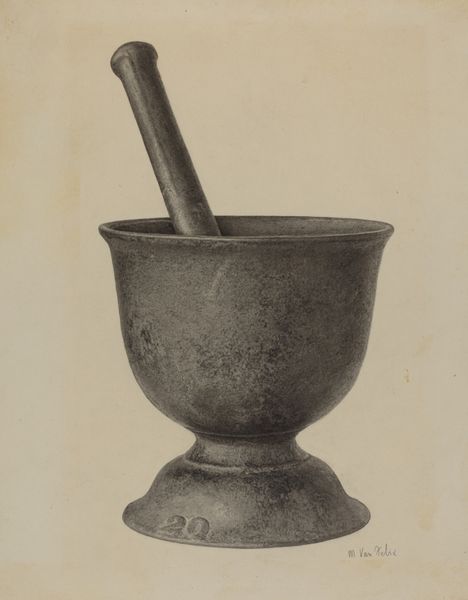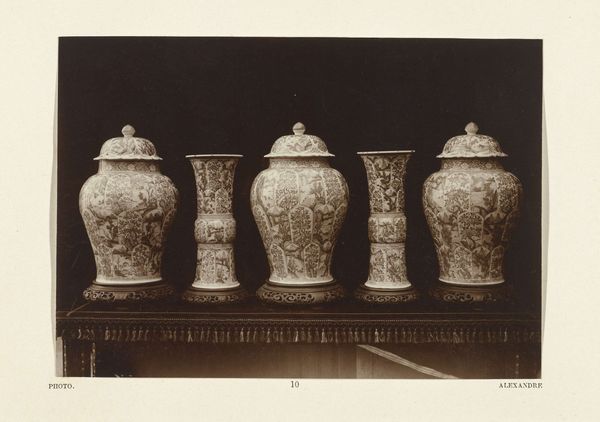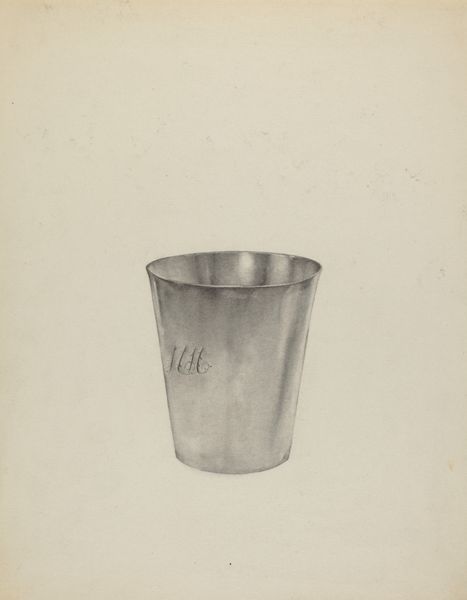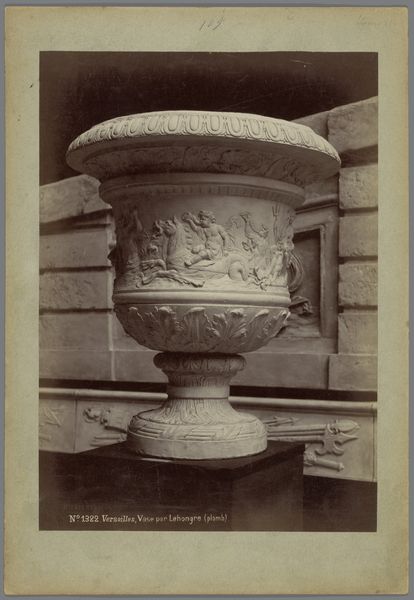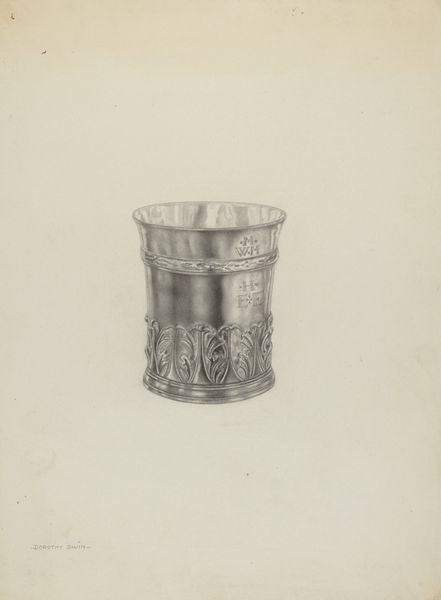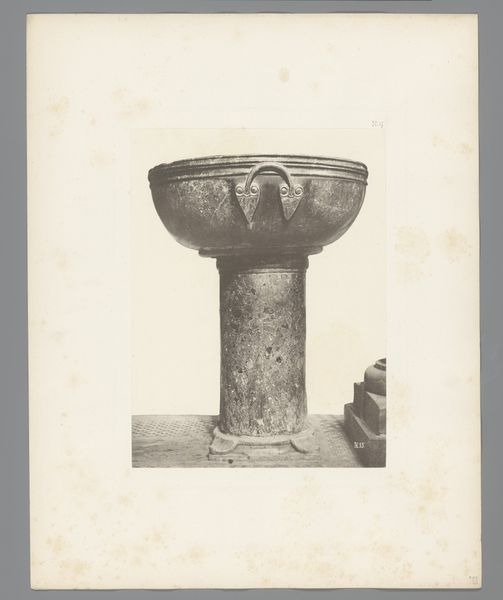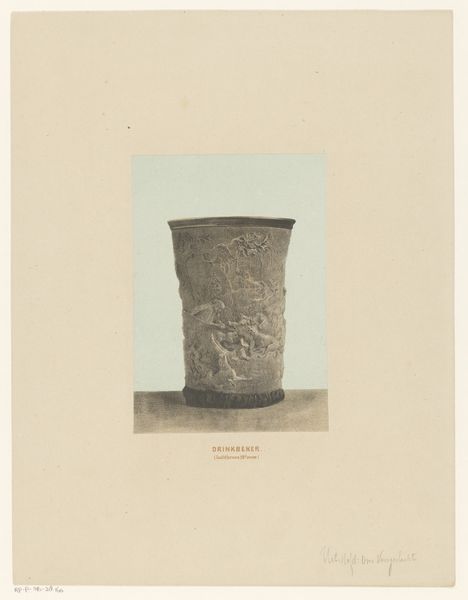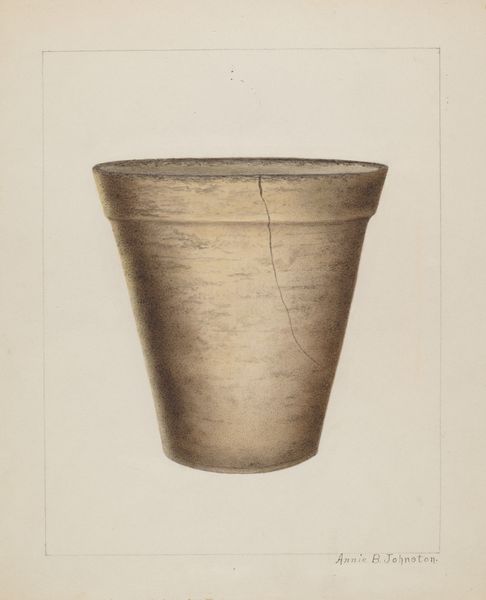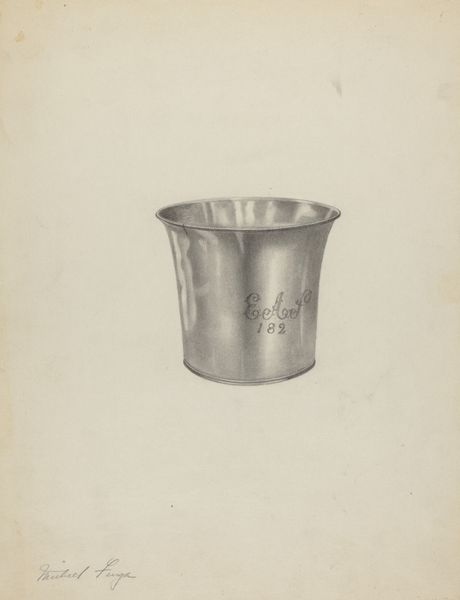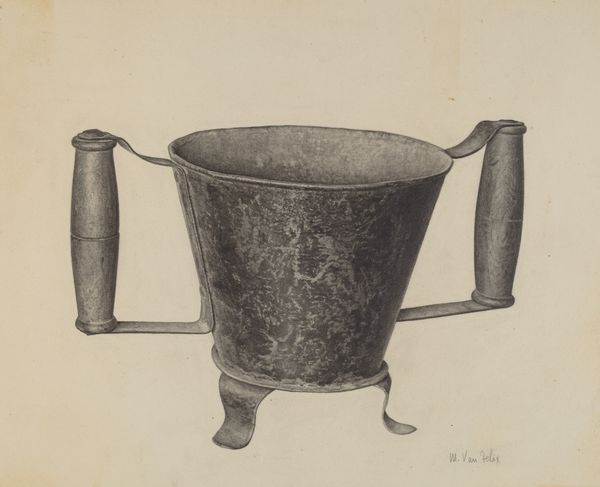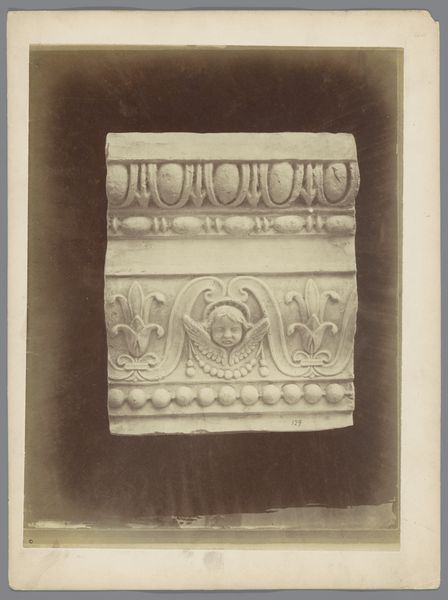
Two Zodiac jugs. Kawali, Ciamis district, West Java privonce, 14th-16th century Possibly 1863 - 1864
0:00
0:00
relief, ceramic, photography, gelatin-silver-print
#
asian-art
#
relief
#
ceramic
#
photography
#
stoneware
#
gelatin-silver-print
Dimensions: height 210 mm, width 170 mm
Copyright: Rijks Museum: Open Domain
Curator: Here we have a gelatin-silver print, possibly created between 1863 and 1864 by Isidore Kinsbergen. It features two stoneware jugs of zodiacal imagery recovered from Kawali in West Java. Editor: Immediately, I am struck by the tonal range, so delicate! These containers are modest, yet hold so much presence through Kinsbergen’s meticulous capturing of their surface design and form. Curator: Indeed. The careful application of light creates a stunning high-contrast tableau emphasizing each meticulously placed relief around these ritual vessels. This juxtaposition heightens the reading of the individual figures. Editor: Speaking of surfaces, I wonder about the artisan. Kinsbergen’s photograph documents craftsmanship lost to time, anonymous hands shaping earth, fire, and symbol into forms intended for, perhaps, ritual offerings or daily use. The socio-historical context—the role of vernacular craft vis-à-vis European colonial enterprises—becomes central. Curator: A pertinent point, though it also raises the aesthetic value attributed through composition. Kinsbergen has arranged them precisely. The eye traces lines formed by light. Their relative placement seems calculated to achieve equilibrium between them. Each is set off by the darkness to produce an asymmetrical whole which begs further study through line and volume. Editor: And let us not disregard the conditions that fostered such artistry in the first place! Labor practices in 14th-16th century Java directly influenced what techniques and designs even became possibilities. Curator: A compelling case! Editor: It invites speculation, no? Considering material origins shapes my appreciation. Curator: Undoubtedly, our distinct readings serve to amplify our understanding.
Comments
No comments
Be the first to comment and join the conversation on the ultimate creative platform.

